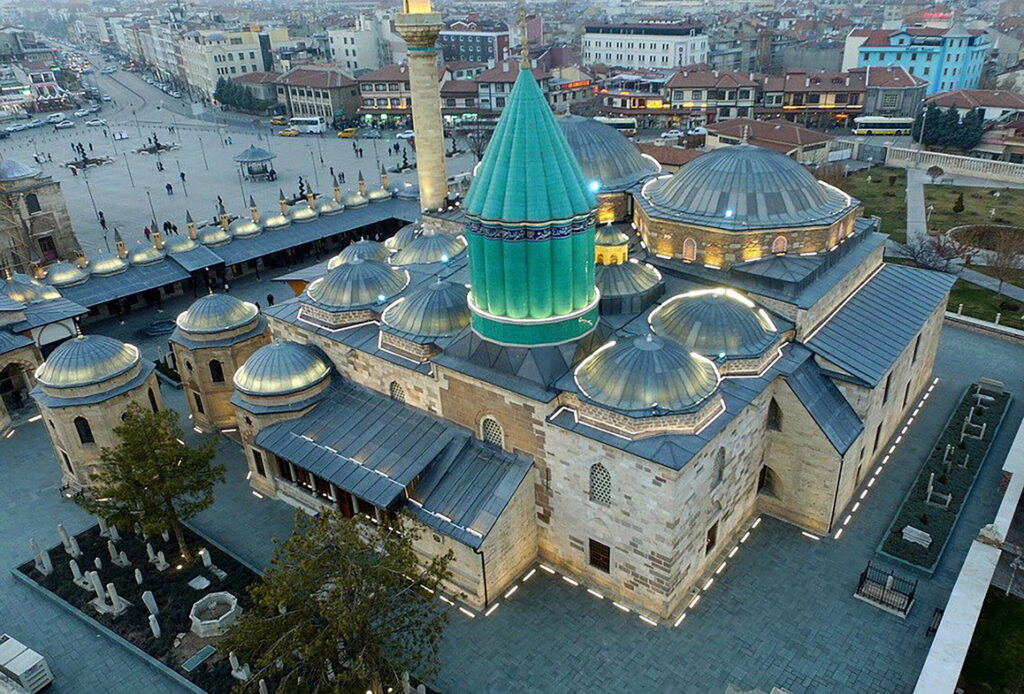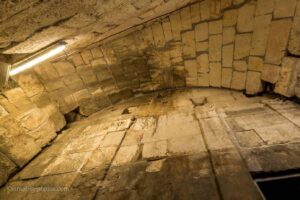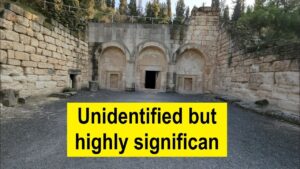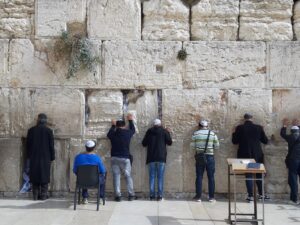Nestled in the heart of Konya, Turkey, the Mevlana Rumi’s Tomb is a beacon of spiritual significance and a testament to the enduring legacy of one of the world’s most beloved poets and mystics, Jalal ad-Din Muhammad Rumi. This site is not just a resting place but a vibrant cultural and spiritual hub that attracts visitors from all over the globe, seeking inspiration and a deeper understanding of Rumi’s teachings.
What to See
Upon entering the Mevlana Museum complex, where the tomb is located, visitors are greeted by the lush Rose Garden, a serene prelude to the spiritual journey ahead. The main attraction is the Green Dome (Kubbe-i Hadra), an iconic turquoise structure that houses Rumi’s sarcophagus. The interior of the mausoleum is adorned with intricate Islamic calligraphy and beautiful tile work, creating an atmosphere of reverence and peace.
Inside the museum, you’ll find a collection of Rumi’s personal items, manuscripts, and artifacts that provide insight into his life and teachings. The Dervish Lodge, part of the museum complex, offers a glimpse into the lives of the Whirling Dervishes, followers of Rumi’s Sufi order, known for their mesmerizing spiritual dance.
A Bit of History and Interesting Facts
Rumi, born in 1207, was a Persian poet, theologian, and Sufi mystic whose works have transcended time and culture. His poetry, often centered around themes of love, unity, and the divine, continues to resonate with people worldwide. Rumi spent the latter part of his life in Konya, where he established a Sufi order known as the Mevlevi Order, famous for the Whirling Dervishes.
The tomb was built shortly after Rumi’s death in 1273 and has since become a pilgrimage site for those who admire his work and seek spiritual enlightenment. An interesting fact about the tomb is that it was initially a rose garden belonging to the Seljuk Palace, which Rumi’s father was given as a gift by the Sultan of the time.
How to Get There and Tips for First-Time Visitors
Konya is well-connected by air, rail, and road, making it accessible from major Turkish cities like Istanbul and Ankara. The Konya Airport is about 20 minutes from the city center, and there are regular flights from Istanbul. Alternatively, high-speed trains and buses offer a scenic route to Konya.
Once in Konya, the Mevlana Museum is centrally located and easily reachable by public transport, taxi, or even a leisurely walk if you’re staying nearby. For first-time visitors, it’s advisable to dress modestly, as the site is a place of religious significance. Photography is allowed in most areas, but it’s always good to check for any restrictions.
Visiting the tomb during the annual Seb-i Arus festival in December can be a unique experience, as it marks the anniversary of Rumi’s death and features various cultural and spiritual events, including Whirling Dervish performances.








